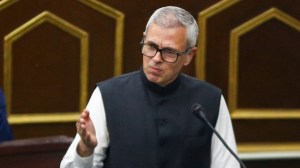Maharashtra’s organ donation dilemma: 8,000 await life-saving transplants as donor numbers not up to the mark
The majority of organ transplant registrations—over 78 percent—are for kidneys, with 6,480 requests.
 Cadaveric donations are however gradually increasing. In 2021, there were 95 donors, which rose to 105 in 2022 and 148 in 2023. (Representational Photo)
Cadaveric donations are however gradually increasing. In 2021, there were 95 donors, which rose to 105 in 2022 and 148 in 2023. (Representational Photo)Currently, over 8,000 people in Maharashtra are on a waiting list for life-saving organ donations. However, the availability of organs remains scarce. According to State Organ and Tissue Transplant Organization (SOTTO) data, there is only one deceased donor for every 103 patients awaiting an organ transplant as of June this year.
The majority of organ transplant registrations—over 78 percent—are for kidneys, with 6,480 requests. This is followed by 1,533 requests for liver transplants, 133 for heart transplants, 57 for lung transplants, 34 for pancreas transplants, and three for small bowel transplants. In total, 8,240 patients with various life-threatening conditions are waiting for donors in Maharashtra.
With a population of around 12 crore, Maharashtra records about 7 lakh all-cause deaths annually. Doctors believe that if at least 5-10 per cent of brain-dead patients were considered for organ donation, the need for living donors could be eliminated and the long waiting list could be cleared.
As of June this year, Maharashtra has recorded 80 deceased donations, also known as cadaver donations, from which 239 organs have been transplanted. Cadaver donation involves giving organs and tissues from a deceased person, typically after brain death, to save or enhance the lives of transplant recipients.
Cadaveric donations are however gradually increasing. In 2021, there were 95 donors, which rose to 105 in 2022 and 148 in 2023.
Doctors cite cultural beliefs, lack of awareness, misconceptions, inadequate infrastructure, insufficient medical facilities, and the absence of a robust national registry as reasons for the low number of donors, despite years of sensitization efforts.
“We have made significant progress in combating superstitious beliefs surrounding organ donation, yet hesitation persists,” said Dr. Bharat Shah, secretary of the Zonal Transplant Coordination Centre (ZTCC).
“It’s crucial to instil awareness from a young age through educational programmes. By integrating organ donation education in school curriculums, we can foster a more informed and accepting attitude toward donation among future generations,” said Dr Shah.
Meanwhile, due to the gap in organ supply, many patients lose their lives each year. For example, Sejal Jobanputra (45) has been on dialysis since 2007 after her initial kidney transplant failed. After years on the donor waiting list, she withdrew her name in 2018. “Years of dialysis have severely impacted my health… I am no longer fit enough to endure another transplant,” she shared.
Her situation is far from unique.
In May, the health ministry, through the National Organ and Tissue Transplant Organization (NOTTO), introduced protocols encouraging hospitals to place ‘Required Request Display Boards’ in prominent areas.
These boards inform the public that, in the tragic event of brain death or cardiac arrest, the donation of organs and tissues—including kidneys, liver, heart, pancreas, eyes, skin, and bones—can save lives.












